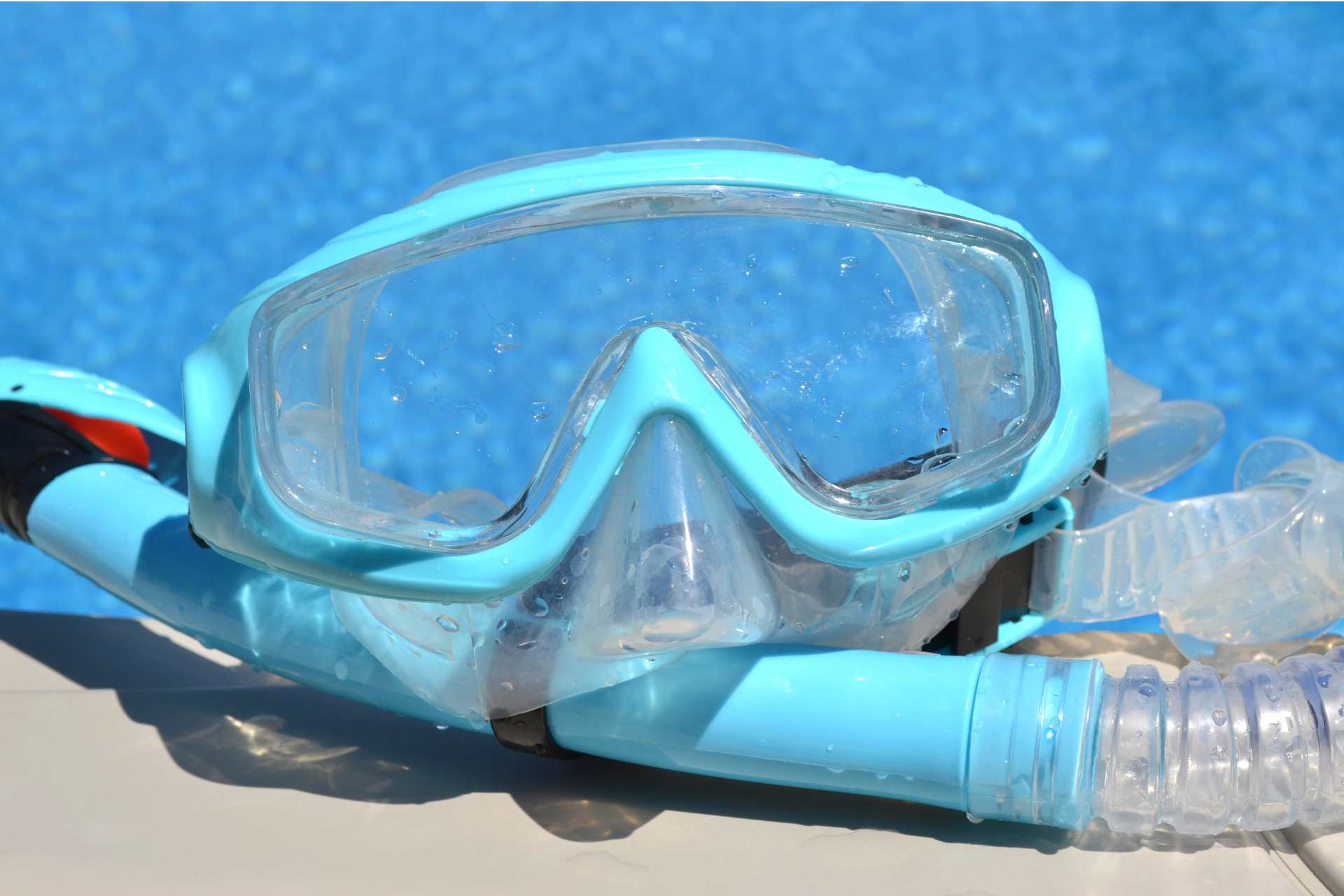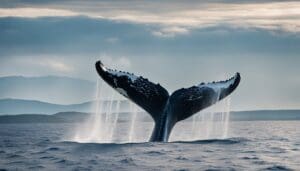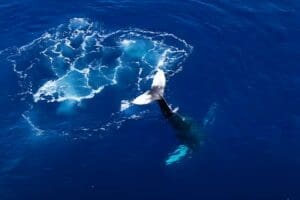Swimming with Whales: An Unforgettable Encounter in the Depths
Swimming with whales is an experience often found at the top of many adventurers’ bucket lists. With the chance to share the water with the largest animals on Earth, this captivating activity is not just about the thrill; it’s a profound way to connect with nature.
Imagine yourself immersed in the open ocean, surrounded by the serenity of the deep blue, as these magnificent creatures glide gracefully alongside you. It’s a dance between species, an intimate encounter that respects the whales’ natural habitat while allowing you a glimpse into their mysterious underwater world.
To engage in this spectacular activity, you must familiarize yourself with the ethical and responsible practices that ensure the whales’ and participants’ safety and well-being. This involves selecting reputable operators who abide by strict guidelines for wildlife interactions.
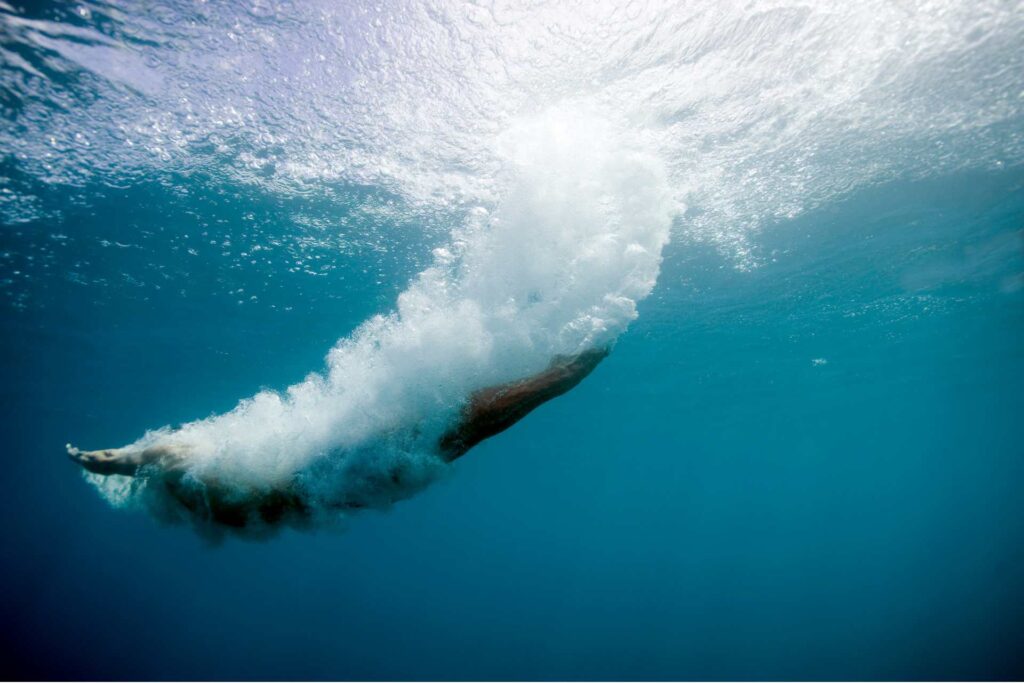

Understanding the best times of the year and the most suitable locations for these encounters is also key. Places like French Polynesia and Tonga are known for their accessibility to humpback whales, offering clear, warm waters ideal for swimming with these gentle giants.
Preparing for your swim with whales is just as important as the experience itself. You’ll need appropriate gear, respect for the animals’ space, and a calm demeanor. The right equipment, usually a snorkel, mask, and fins, will enhance your mobility and comfort in the water.
Moreover, being well-informed about whale behavior and communication helps foster a safe and mutually respectful interaction. As you gear up for this unforgettable adventure, keep in mind that the privilege of entering the whales’ domain comes with the responsibility to protect and preserve their natural environment.
Understanding Whale Behavior
When you decide to swim with whales, it’s essential to understand their behavior, including their communication, social structure, and how they interact with their environment. Recognizing these patterns will enhance your experience and ensure respectful and safe encounters.
Communication and Social Structure
Whales have complex social structures and communicate through various sounds, including clicks, whistles, and pulsating calls. This form of singing underwater is not just a beautiful phenomenon; it’s a critical part of their interaction and maintaining social bonds. Whales often travel in pods, showing a detailed social structure where each member plays a role, and their vocalizations can be thought of as the glue that keeps these groups together.
Feeding Patterns and Migration
The feeding behavior of whales varies by species and season. Many species, like the humpback whale, undertake long migration routes traveling from cold feeding areas to warm breeding grounds. Your understanding of these migration patterns can help predict their presence in certain areas and influence the timing of your swimming adventures. These patterns are intertwined with the whales’ feeding behavior, which often involves sophisticated and collaborative techniques to corral and consume schools of fish or krill.
Breaching and Other Surface Behaviors
Breaching, the act of a whale leaping out of the water, is an awe-inspiring behavior. While the exact reason for this activity is still debated, it may be a form of communication, a method to loosen skin parasites, or a display of strength. When participating in swimming activities, it’s crucial to observe whale behavior, like breaching from a safe distance to avoid danger due to the sheer size and power of these marine mammals.
Best Destinations for Swimming with Whales
Exploring the vast oceans alongside the gentle giants of the marine world is an experience like no other. Whether you’re seeking the warm waters of the tropics or the pristine cold of the Arctic, there are destinations renowned for offering unique whale swimming opportunities.
Tahiti, Moorea, and Bora Bora, French Polynesia
In French Polynesia, sanctuaries like Mo’orea offer you close encounters with humpback whales. This region is known for its commitment to marine conservation, providing a safe habitat for these majestic creatures. From July to November, you can immerse yourself in clear waters and witness the playful behavior of these giants firsthand. For detailed insights, visit swim with whales in French Polynesia.
Tonga and the South Pacific
Tonga is a premier destination for swimming with humpback whales. These respectful encounters, available between June and October, give you a chance to swim alongside mother whales, nursing their calves. The clear waters of the South Pacific enhance the visibility, making your experience in Tonga even more unforgettable.
Dominican Republic and the Caribbean
The warm, sheltered waters of the Silver Bank, situated in the Dominican Republic, serve as a nursery for humpback whales during the winter breeding season. Between January and March, the Silver Bank is one of the few places where you’re permitted to swim with these magnificent creatures. The proximity to Turks and Caicos also offers additional opportunities for sightings and swims.
Norway and the Arctic
For a truly awe-inspiring adventure, head to Norway. Here, beneath the magical Northern Lights, you can witness orcas and humpback whales chasing herring in the fjords. The winter months provide the best chances to don a dry suit and dive into the cold Arctic waters for an encounter you’ll treasure for a lifetime.
Diverse Whale Species Encounters
Exploring the vast ocean, you have the opportunity to encounter various whale species, each with its unique characteristics and behaviors. Whether it’s observing the acrobatics of humpback whales and their calves or quietly encountering the elusive minke whales, these experiences offer glimpses into the underwater world of these marine giants.
Humpback Whales and Their Calves
Humpback whales are renowned for their remarkable songs and impressive breaching displays. When you swim with them, especially during the breeding season, you might witness mothers tenderly caring for their newborn calves. Young humpbacks learn from their mothers, honing skills necessary for survival. Observing these maternal bonds firsthand is both humbling and mesmerizing.
The Elusive Minke Whales
Minke whales are the smallest of the baleen whales you can encounter. They can be somewhat shy, making sightings a special and memorable event. These intelligent creatures are known for their curiosity, and if you’re fortunate, they may choose to approach you, offering a rare chance to witness their sleek form gliding effortlessly through the water.
The Majestic Blue and Sperm Whales
The blue whale, the largest animal on the planet, presents a breathtaking spectacle. Their sheer size and grace are unparalleled, and swimming in their presence is an unforgettable experience. Sperm whales, the largest of the toothed whales, also fascinate with their deep diving abilities. Encounters with sperm whales often happen in deeper waters, where you can observe them in their natural habitat, sometimes surrounded by their close-knit social groups.
Ethical and Safe Practices
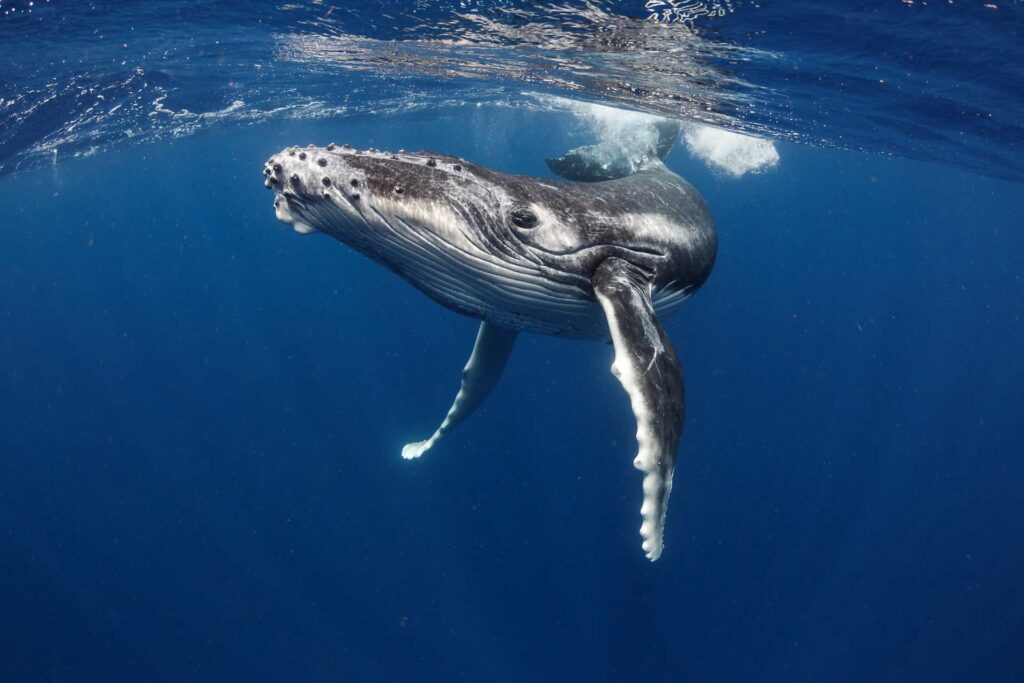

In engaging with the majesty of whales, your adherence to ethical and safe practices ensures the protection of these marine mammals and their habitats. It’s imperative to respect the delicate balance of the ecosystems and follow regulations designed to preserve it.
Respecting Marine Life and Habitats
When you swim with whales, remember that you’re a visitor in their natural environment. Protected areas are established to safeguard the delicate habitats of these creatures. Maintaining a respectful distance is crucial, avoiding any actions that could disturb or harm the animals. Adhere to a code of conduct that prioritizes the well-being of whales, such as minimizing noise and refraining from touching them.
Following Local Regulations and Permits
Before diving into this experience, ensure you’ve obtained the necessary permits. These regulations are in place to limit the impact on the whales and their environment. Follow the local regulations; they may include specific rules about proximity to the whales, the duration of your encounter, and the size of the swimming group.
Choosing Eco-Friendly Tour Operators
Selecting eco-friendly companies is a powerful way to contribute to conservation efforts. Look for operators that follow best practices in environmental stewardship and have a proven track record of responsible conduct. By choosing these operators, you support businesses that are invested in the longevity and health of marine life.
Preparation for Swimming with Whales


Before embarking on the incredible journey of swimming with whales, your preparation is critical. You need to be physically fit, understand the dive gear required, and know how to assess the weather and water conditions to ensure a safe and fulfilling experience.
Physical Fitness and Swimming Skills
You must be in good physical shape and possess proficient swimming skills to swim with whales. Stamina and strength are necessary as you might face strong currents or need to swim for extended periods. Practice endurance swimming and breathing techniques, and consider taking specialized swimming or snorkeling lessons if you are not already an experienced swimmer.
Understanding the Required Dive Gear
A proper understanding of the dive gear is essential. At a minimum, you will need:
- Snorkeling mask: To see clearly underwater.
- Fins: For efficient movement in the water.
- Wetsuit: Thickness depends on water temperature; typically, 3 mm to 5 mm suits are adequate for most locations.
- Dive computer/watch: To track your time and depth (for diving scenarios).
- Signal device: Safety precaution to alert boats in case of an emergency.
It’s vital to familiarize yourself with each piece of equipment in calm waters before your trip.
Assessing Weather and Water Conditions
Understanding and assessing the weather and water conditions is crucial:
- Weather: Check forecasts regularly, as conditions can change rapidly.
- Water Temperature: Determines wetsuit thickness; colder waters require thicker suits for thermal protection.
- Visibility: Can be affected by plankton blooms and weather patterns; clear water is ideal for swimming with whales.
Each of these factors can significantly influence your safety and the quality of your experience. Always check with your tour operator for the most up-to-date conditions.
Conservation and Research Efforts
In the field of marine biology, significant strides are being made to ensure the sustainability of whale populations and the broader biodiversity of our oceans. Your understanding of these efforts is key to appreciating the delicate balance of marine ecosystems.
Protecting Whale Populations
Efforts to protect whale populations focus on non-invasive techniques and collaboration with local communities. For example, Whale & Dolphin Conservation USA is determined to protect the critically endangered North Atlantic right whale, of which less than 400 remain in the wild. Conservationists monitor these populations closely, offering vital data to inform protective measures.
Contributing to Scientific Studies
You can contribute to crucial scientific studies that advance our understanding of whales. Engaging in respectful and responsible wildlife observation—like participating in studies assessing the impact of new policies that allow swimming with whales—is one way to support marine research that helps with the conservation of these magnificent creatures.
Ocean Conservation Initiatives
Ocean conservation initiatives play a fundamental role in safeguarding marine habitats. The National Marine Sanctuary Foundation, for instance, conducts various activities, including:
- Workshops: Hosting disentanglement workshops to improve whale rescue response (National Marine Sanctuary Foundation).
- Research: Supporting data gathering on whale migration paths to prevent conflicts with human activities.
- Innovations: Promoting gear technology that reduces risks to whales, such as fishing nets designed to minimize entanglements.
Photography and Videography Tips


Embarking on the adventure of swimming with these majestic creatures offers a unique opportunity to capture awe-inspiring moments. Remember, your priority is to document your experience without disrupting the gentle giants of the sea.
Capturing Underwater Experiences
To record the true essence of whale watching or a humpback whale encounter, it is essential to understand and anticipate their behavior. Patience is paramount, as these magnificent animals may not always be on your schedule. Positioning yourself correctly without disturbing the whales is key to capturing stunning footage. For clear shots, it’s crucial to maintain a steady hand and use underwater modes on your camera if available.
- Wait for clear visibility to ensure pronounced details in your footage.
- Mind your shadow and reflection to avoid startling the whales or spoiling the shot.
Respectful and Non-Intrusive Techniques
Practicing respectful and sustainable approaches during whale tours is as important as the photos you take. Avoid flash photography and rapid movements that might distress the whales.
- Keep a respectful distance, as specified by your whale tour guidelines.
- Always follow the lead of your guide to ensure non-intrusive interactions.
Equipment Recommendations
Choosing the right equipment can elevate your photography from good to great. For whale sharks and large aquatic animals, wide-angle lenses are ideal as they fit the grandeur of these creatures into a single frame.
- Consider a camera with a dome port for wider shots and to capture the scale of the animals.
- Simple equipment like a GoPro can yield amazing results, especially with the use of a selfie pole for better angles.
Remember, while your aim is to capture the wonder of these underwater encounters, your approach should always prioritize the well-being of the wildlife you’re there to admire.
Understanding Whale Anatomy
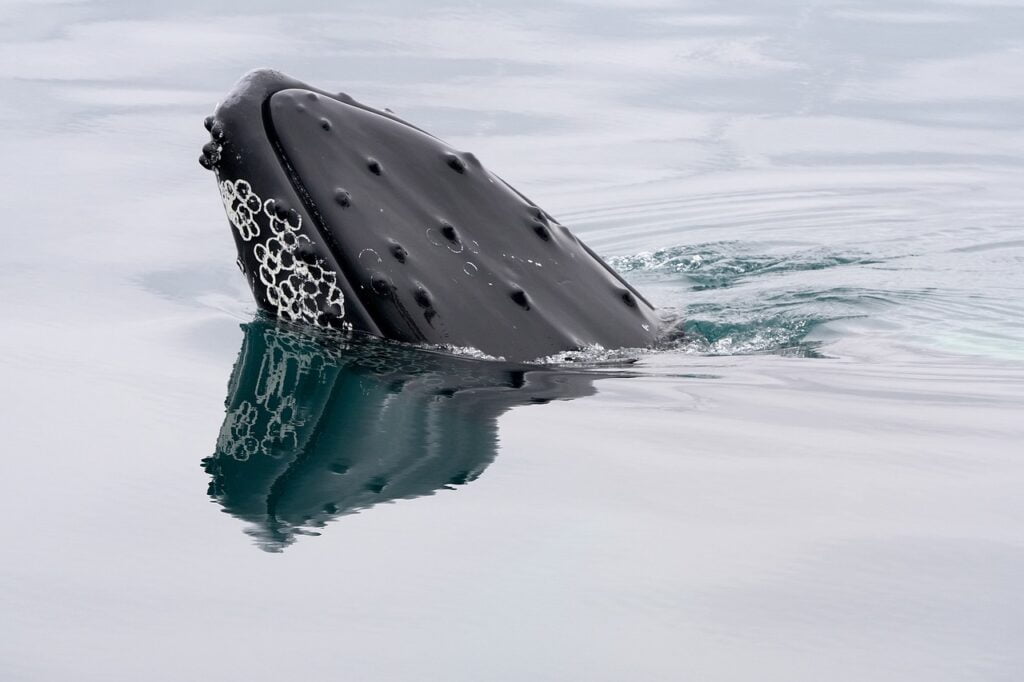

When you observe whales, understanding their anatomy is crucial to appreciate how they have evolved and adapted to thrive in their aquatic environment.
Baleen vs. Toothed Whales
Baleen whales are a group of whale species that, instead of teeth, have baleen plates, which they use to filter feed. This unique feeding mechanism allows them to sieve tiny prey like krill from the water. Common baleen whales include the blue whale and humpback whale. On the other hand, toothed whales, such as orcas and sperm whales, possess teeth and hunt larger prey. These whales use echolocation to find their food, a skill not observed in baleen whales.
Adaptations for Aquatic Life
Both baleen and toothed whales have made significant adaptations for life in the water. Their streamlined bodies reduce drag while swimming. Blubber provides insulation against cold water temperatures and also serves as an energy reserve. Baleen whales often have two blowholes, and toothed whales have one, which are crucial for breathing at the surface.
Significance of Pectoral Fins and Tail Flukes
Pectoral fins in whales are essential for steering and stabilizing as they swim through the water. The tail flukes are the powerhouse of the whale’s propulsion system. Unlike fish, which move their tails side to side, whales move their flukes up and down to push forward through the water, as detailed in the characteristics of whale anatomy. These adaptations are pivotal for their swimming efficiency and agility in the marine environment.
Seasonal Patterns and Migration
Understanding the seasonal patterns and migration of whales is crucial for conserving these magnificent mammals. The migratory journeys are essential for their survival, encompassing everything from breeding to foraging dynamics.
Breeding and Calving Grounds
Humpback whales and many other species embark on lengthy voyages to reach their breeding and calving grounds, typically in warmer waters. For example, humpbacks are known to travel to areas near Hawaii from their feeding grounds in Alaska to mate and give birth. This annual travel can cover up to 3,000 miles.
Tracking Migration Routes
Researchers have made significant progress in tracking migration routes. Methods such as satellite tagging allow for the detailed monitoring of whale movements, revealing patterns essential for conservation efforts. The eastern North Pacific gray whale, for example, is observed rigorously due to its migration pattern that hugs the North American coast.
Impact of Climate Change on Movements
Climate change poses new challenges, altering existing migration routes and affecting the population dynamics of not just whales but also other species like orca and whale sharks. Warming ocean temperatures and shifting prey availability can lead to changes in habitual migration paths and timings, requiring close scientific monitoring to understand the long-term impacts on these species. It’s important for you to recognize that these changes can influence whale behavior and the feasibility of swimming with them in specific regions.
Responsible Tourism and Community Impact
Tourism activities, particularly those as unique as swimming with whales, have significant potential to support local economies and contribute to conservation efforts. Your choices as a tourist can have a profound impact.
Supporting Local Economies
When you participate in tours like swimming with humpback whales, you’re contributing to the local economy where these tours are operated. This can include direct support through the payment of tour fees, which helps create jobs within the community. For example, in places like the Saguenay – St. Lawrence Marine Park, your financial input can help sustain the region’s livelihood.
- Revenue Generation:
- Tour payments
- Local taxes
- Employment Opportunities:
- Tour guides
- Hospitality services
Balancing Tourism with Preservation
Your choice to engage in responsible whale watching can help strike a balance between tourism and the preservation of marine life. Observing regulations in a marine sanctuary ensures that you minimize the disturbance to the natural behavior and habitat of the whales. It’s crucial to follow strict guidelines, which may include maintaining a specific distance from the wildlife and adhering to proper swimming procedures.
- Guidelines Compliance: It’s critical to follow set rules that help protect whale populations and other marine life.
- No touch policy
- Restricted approach distances
Educational Programs and Awareness
You enhance your understanding of marine life conservation by joining educational programs associated with whale tours. Providers of such experiences, like those in the Pacific Whale Foundation, often include educational elements designed to raise awareness about the need to protect these magnificent creatures and their habitats.
- Awareness Initiatives:
- Onboard education sessions
- Informational materials
Participating in informative sessions during your excursion will furnish you with knowledge about the critical role humpback whales play in marine ecosystems and the threats they face due to human activities. This knowledge can then be shared, extending the impact of your tour beyond your immediate experience.

